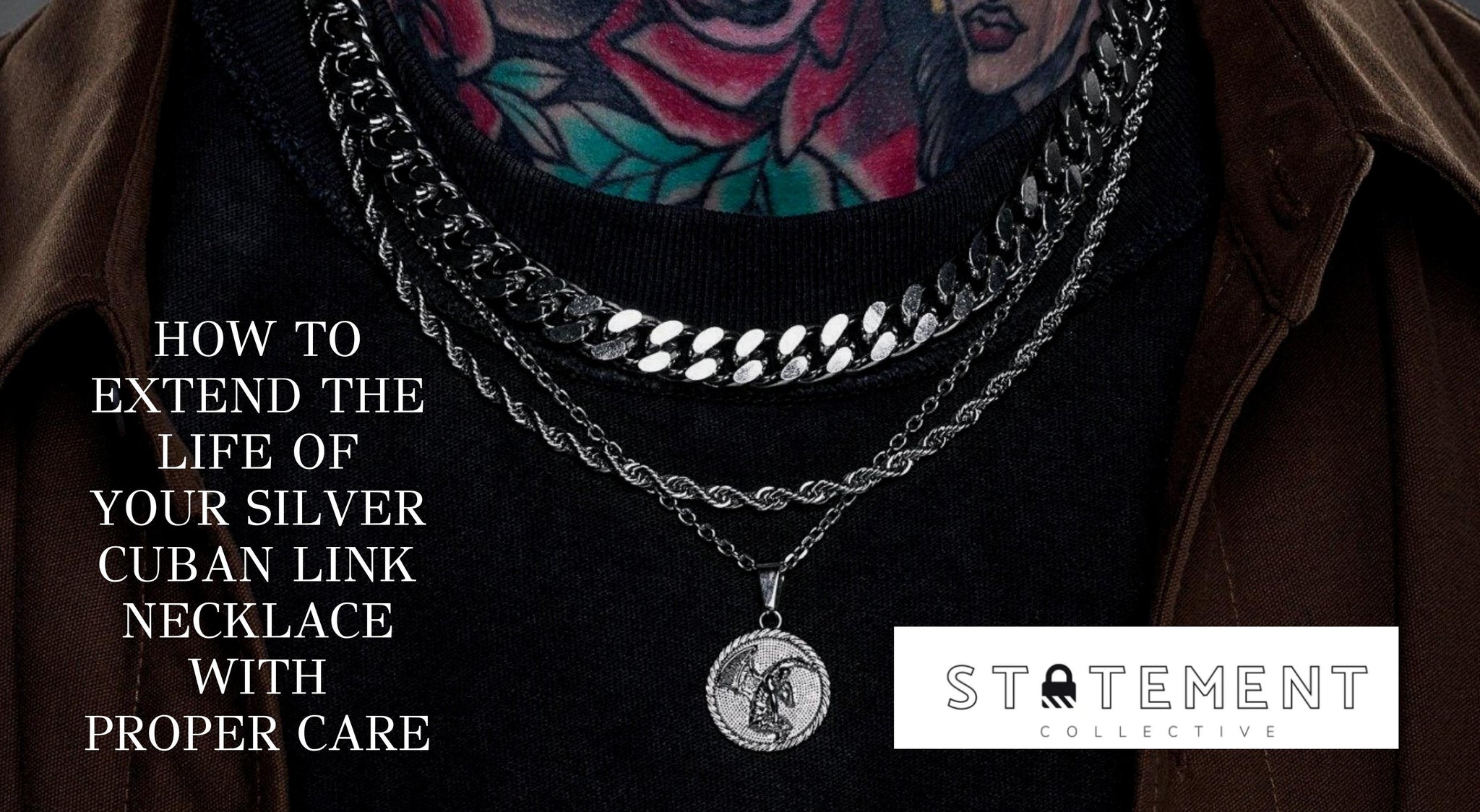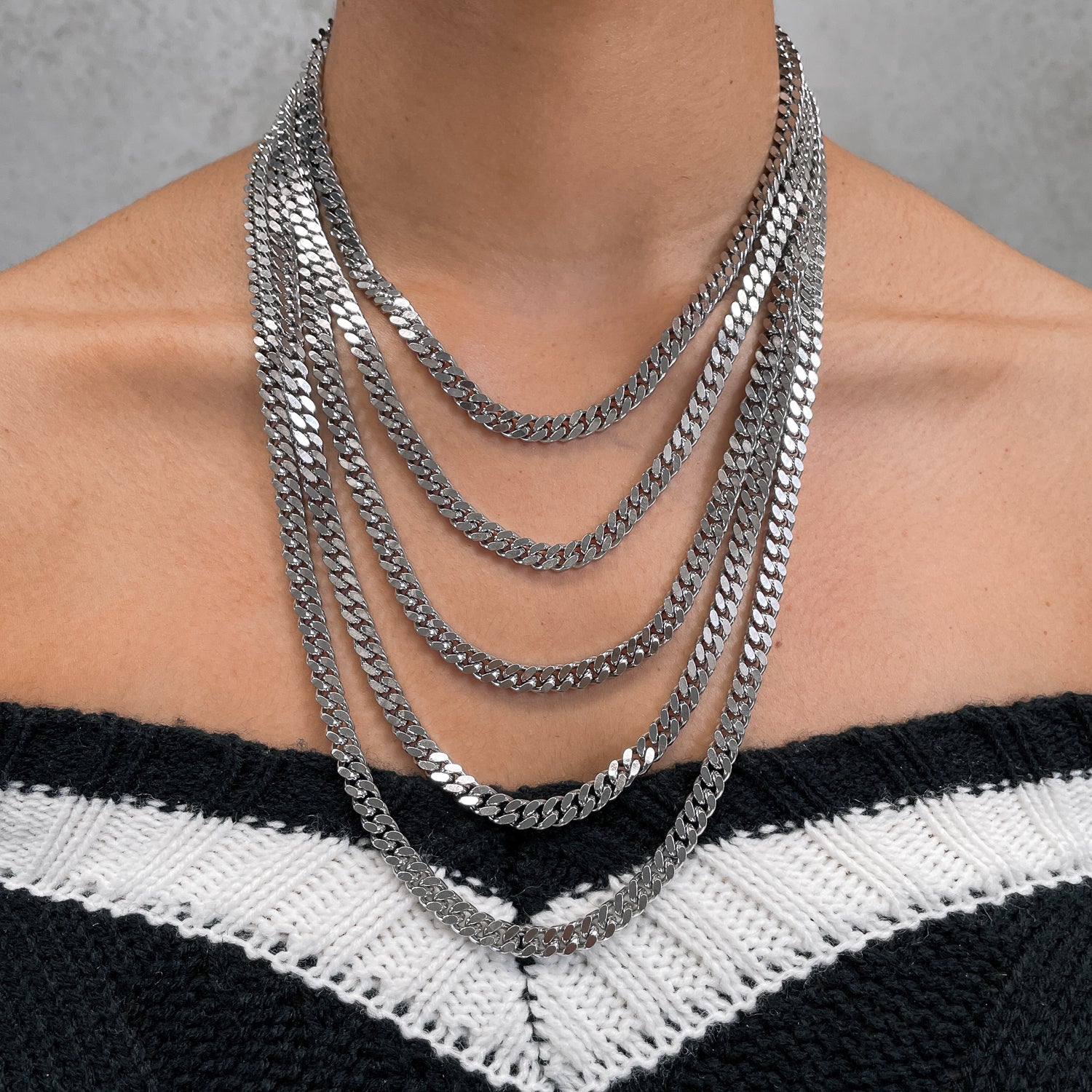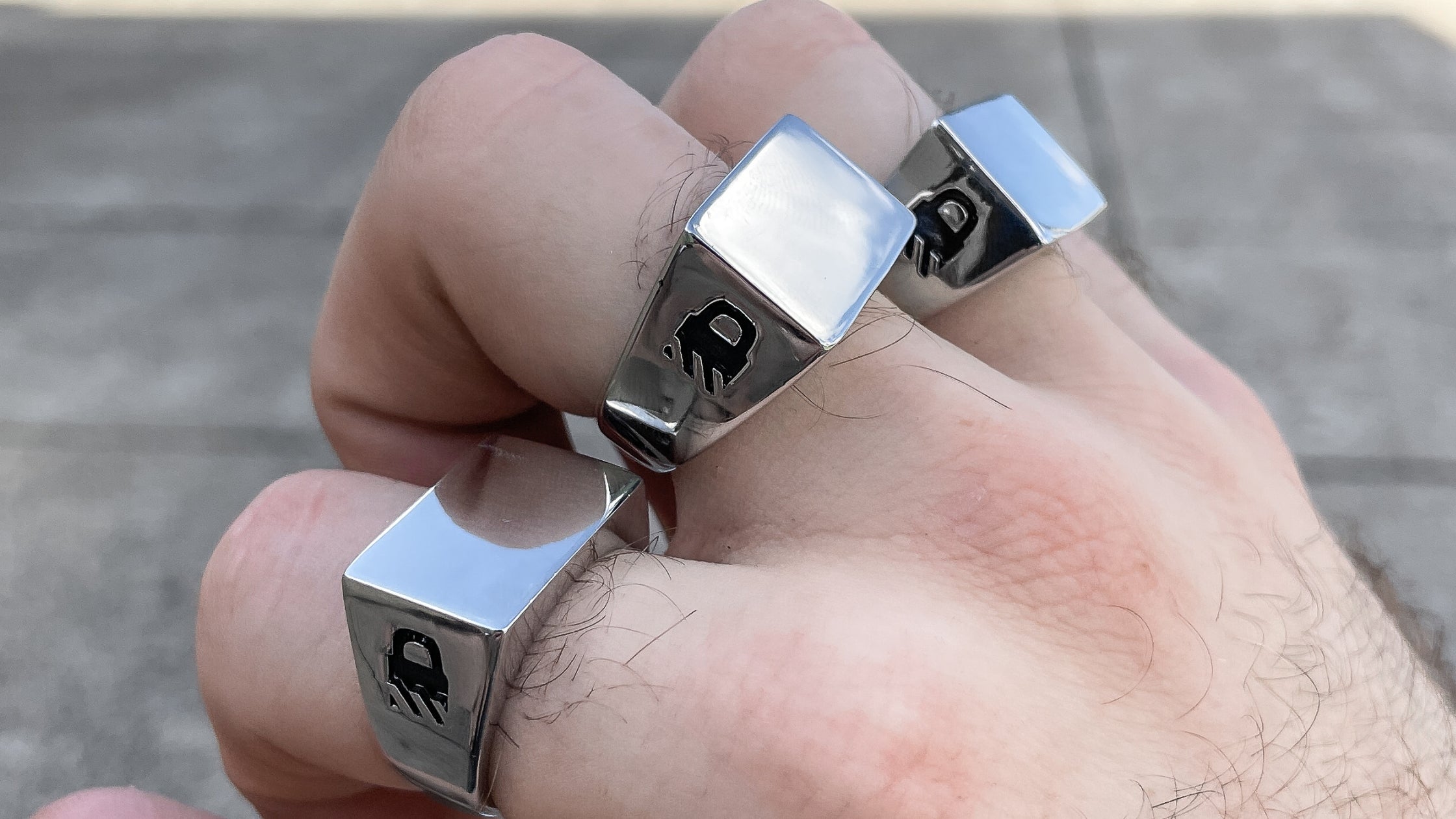How To Extend The Life Of Your Silver Cuban Link Necklace With Proper Care

A silver Cuban link necklace is a beautiful accessory that can add a touch of elegance to any outfit. However, like all silver jewelry, it requires a little bit of care to keep it looking its best. Here are some tips to help you increase the lifespan of your silver necklace.
Why you should care for your silver necklace
Sterling silver is a metal that can be damaged by heat, humidity and chemicals such as perfume and hairspray. Silver oxidises when exposed to water, so if you wear your silver Cuban link necklace while swimming or sweating, clean it as soon as possible to avoid tarnishing from exposure to water. If you want to maintain your necklace looking good for years to come, follow these tips:
Avoid wearing the necklace when swimming or showering. Please keep it away from strong sources of heat like radiators or stoves. Don't store it in a jewelry box full of other jewelry with similar materials that could rub off on yours when handled together at home or during travel time!
Here are some tips to help you increase the lifespan of your silver necklace.
The first step is to keep your necklace in a box or cloth pouch separate from other pieces, and this will help prevent scratches and tarnish, which can occur when silver comes into contact with moisture. Then, when you're not wearing the necklace, store it in a place where it won't get damaged by other jewelry or anything else nearby (such as being knocked off your dresser). Finally, for long-term storage, wrap the chain in paper or cloth so that it doesn't rub against itself and cause any damage from the tarnish.
What is the best way to clean a silver necklace?
To clean your necklace best, avoid harsh chemical cleaners and stick with mild soap and water. Mixing baking soda with water is also a great way to give silver a gentle wash. Avoid using harsh, coarse items to wipe, like steel wool, as this will cause scratches. A good option would be a polishing cloth made of silver as it contains a polishing substance used by jewellers. If you have a lot of silver jewellery, you can even purchase an ultrasonic washing machine.
1. Inspect it for tarnish
Inspect your Cuban link necklace from time to time to check for tarnish. Tarnish is a layer of oxidation that forms on the surface of the silver. While it's okay to have some tarnish on your Cuban link necklace, if it gets too thick and doesn't wipe off easily with a cloth or soft toothbrush, you should polish it off before cleaning.
To remove tarnish, you can use a polishing cloth or toothpaste (make sure not to get any inside the links—the paste may damage them). You can also soak the piece in warm water with some baking soda; this will help break down any dirt buildup and loosen up any grime from years without cleaning!
After taking your necklace from its storage box:
- Inspect it for any signs of tarnish or damage.
- Look at the clasp and links to ensure they're secure and intact. If you see any dark or dull spots on your link chain, use a polishing cloth to remove them.
- If rough spots or kinks are in the links themselves, use a polishing cloth to smooth them out.
It's also worth checking this if you're storing it in an airtight container like a Ziploc bag; humidity can cause silver chains to rust if they aren't allowed to breathe properly.
2. Wash it with water
Once you've inspected the necklace and found no signs of damage or rough spots where it could snag on clothing, wash it gently with water and some mild soap (if needed); when it comes to cleaning your Cuban link necklace, you should use warm water and a soft cloth to wipe off any dust or dirt that has accumulated over time. Avoid putting your piece in the dishwasher; this may cause corrosion over time. Before you wear it again after cleaning it, ensure all the moisture has dried first.
3. Dry it
Once you've finished cleaning the silver, use a clean cloth to dry the necklace thoroughly. Avoid leaving your silver jewellery tangled up on top of dressers or bathroom sinks, as this can cause kinks in the chain that will be difficult to get out later. Use a clean cloth to dry the necklace thoroughly. Once you've dried the necklace thoroughly, use a soft, lint-free cloth to wipe any excess moisture from the links. You can gently buff the links with polishing cloth if you like. Do not use paper towels or tissues because they can cause scratches and leave fibres on your beautiful chain. The same goes for using a hairdryer—it's too harsh on your jewellery and will damage it over time!
4. Hang it up or put it away in its box
If you have a space dedicated to your jewellery, make sure it's clean and safe. A humid environment is especially bad for silver. The outside of the box should be dry, so it doesn't rust, but don't let your pieces steam around inside either—this can lead to tarnishing on other pieces. Your jewelry box might also contain a soft cloth or felt pad that you can use to cushion your necklaces as they hang from their hooks or dangle in the air.
If you don't have an official storage area for your jewelry, try hanging up individual pieces on hooks instead of leaving them tangled on top of dressers or bathroom sinks where they're exposed to moisture and germs from hands touching them without washing them first.
If you put it on top of something, put a cloth underneath it so it doesn't scratch or catch anything else you have there and cause any damage. Also, take off any other jewelry before storing your piece!
Don't let your pieces get tangled up with other pieces by accident. If they do and become twisted together, try gently untwisting them by hand before trying anything else, like twisting them with pliers or tweezers that could potentially damage the metal composition (and thus decrease its value).
How often should you clean a silver necklace?
Silver will naturally fade over time and become less shiny and reflective than when it was freshly polished, which is not always bad! Many, like the patina silver, will develop over time as it becomes bright and smooth; however, they can oxidise and develop tarnish which will require polishing. Typically every 3-6 months is a good timeframe to polish your Cuban silver jewellery. You can purchase a polishing cloth that will do a great job; however, it's worth a trip to a local jeweller every year for a full polish.
What is the best way to store a silver necklace?
The best way to store your silver Cuban link necklace is in a jewelry box or pouch. Avoid placing it directly on the bottom of your jewelry box with other items, as they can rub together, causing scratches. Also, it's best not to keep your necklace in an airtight container or plastic bag, as this can cause a tarnish.

How to clean a tarnished silver necklace?
To clean a tarnished silver necklace, you can use a mixture of water and baking soda:
- Make a paste with baking soda and water.
- Use a soft cloth to rub the paste onto the silver.
- Rinse the silver with clean water and dry it off.
How to clean a silver necklace with toothpaste?
To clean a silver necklace with toothpaste, apply a small amount of toothpaste to the necklace and rub it in with your fingers. Then, rinse the necklace off with water and dry it with a soft cloth.
How to polish a silver necklace?
To polish a silver necklace, you will need the following:
-A polishing cloth
-Silver polish
-A bowl of warm water
-A soft toothbrush
First, use the polishing cloth to rub the silver necklace in a circular motion. Be sure to cover the entire surface of the necklace. Next, apply a small amount of silver polish to the necklace and continue to rub it in a circular motion.
How to clean a silver necklace with baking soda?
To clean a silver necklace with baking soda:
- Mix 1/4 cup baking soda with 1/2 cup warm water.
- Submerge the necklace in the mixture and let it soak for 5 minutes.
- Remove the necklace and rinse it with clean water.
Why is my silver necklace turning bronze?
Silver is a soft metal, so it's easy to come into contact with other substances and change colours. So if your silver necklace turns bronze, it's likely because it's come into contact with something that's caused a chemical reaction. You can try using silver polish or a jewelry cleaning solution to clean it.
How long does a sterling silver necklace last?
Silver is a soft metal, so it's easy to come into contact with other substances and change colours. So if your silver necklace turns bronze, it's likely because it's come into contact with something that's caused a chemical reaction. You can try using silver polish or a jewelry cleaning solution to clean it.
Why is my silver necklace turning black?
There are a few reasons why your silver necklace might be turning black. One possibility is that it's simply tarnishing from exposure to the air. Silver is a relatively soft metal, so it's not surprising that it would tarnish over time.
Another possibility is that your skin is reacting with the silver. This is more likely if you have sensitive skin or are allergic to nickel.
How to restore a silver necklace?
There are a few ways to restore a silver necklace. One way is to use silver polish and a soft cloth to buff the necklace and remove any tarnish. Another way is to soak the necklace in a solution of warm water and baking soda, which will loosen the tarnish and make it easier to clean off.
Wearing a Cuban link chain can be tricky if you don't know how to handle them properly. You must always take care of your jewelry, especially when wearing necklaces made from silver because they're more fragile than other metals (such as platinum).
If you find that yours has become damaged or lost some lustre over time, don't worry! There are ways to restore this beautiful piece to its original state so that you can continue wearing it comfortably throughout every season without worrying about losing any parts along the way!
Hopefully, this guide will help you keep your silver necklaces looking new! If you have any questions about caring for your jewelry, please don't hesitate to reach out to our customer service team. We're always happy to help.







